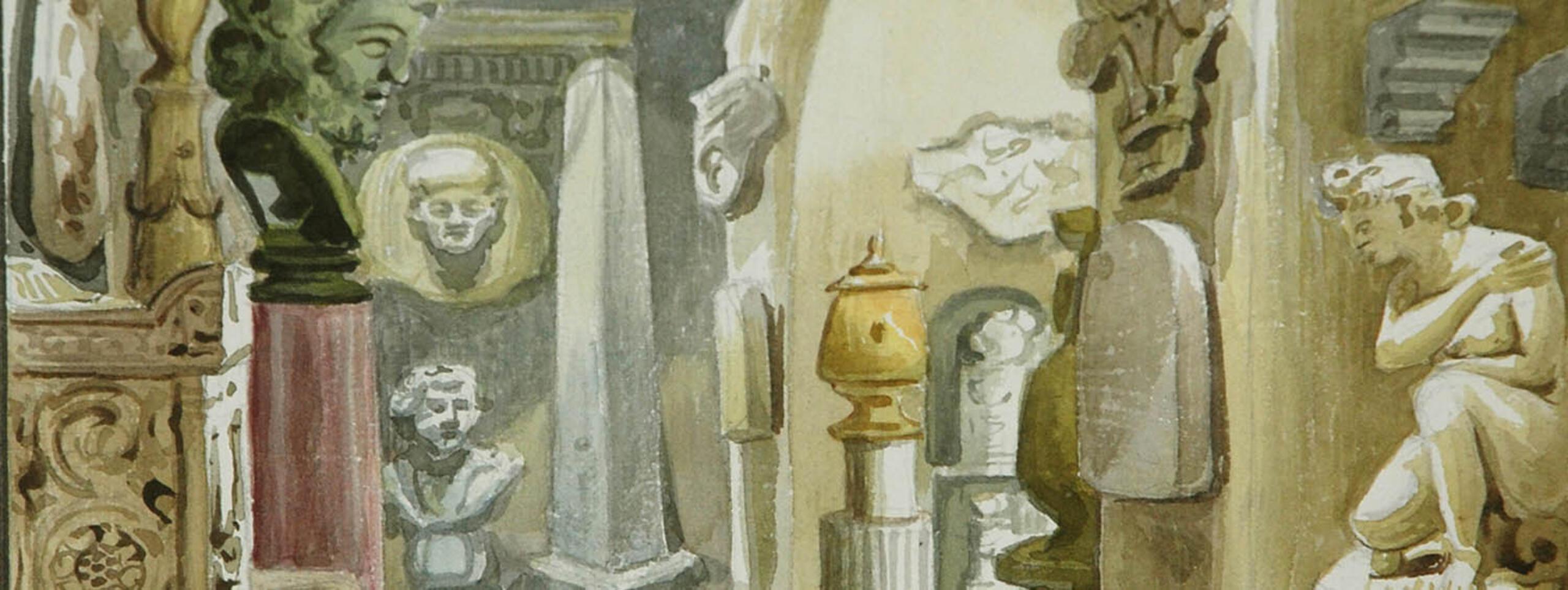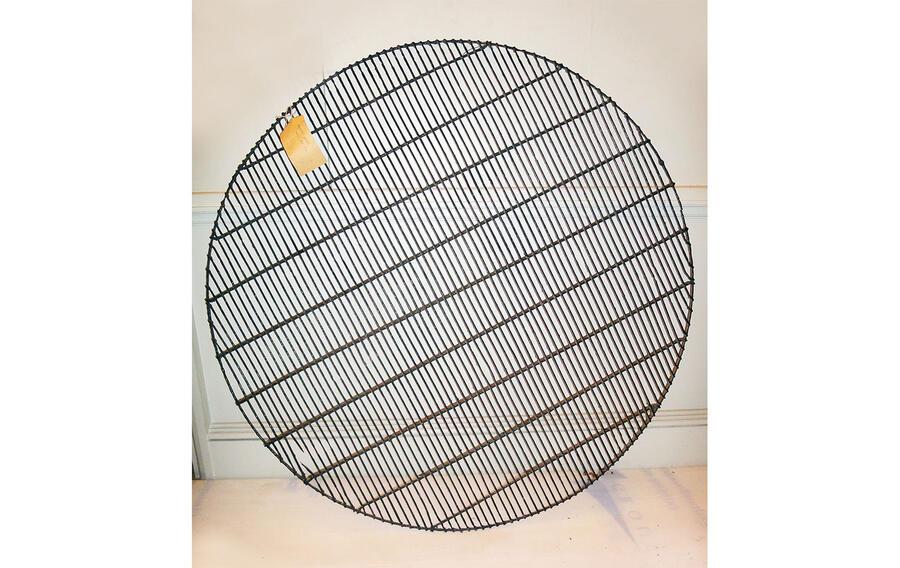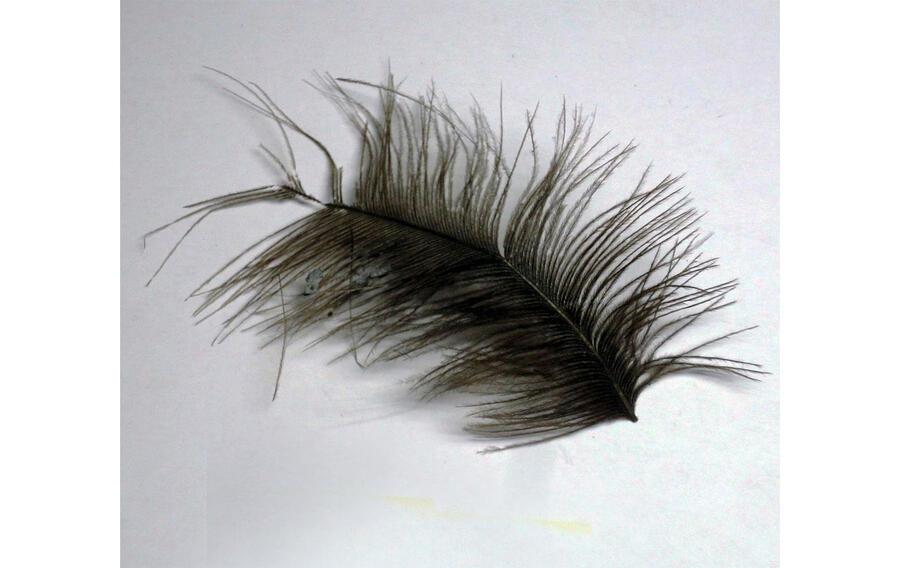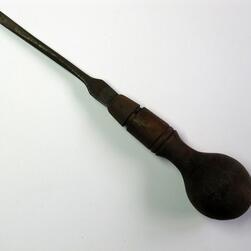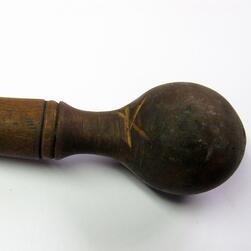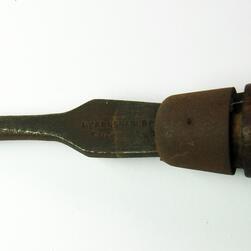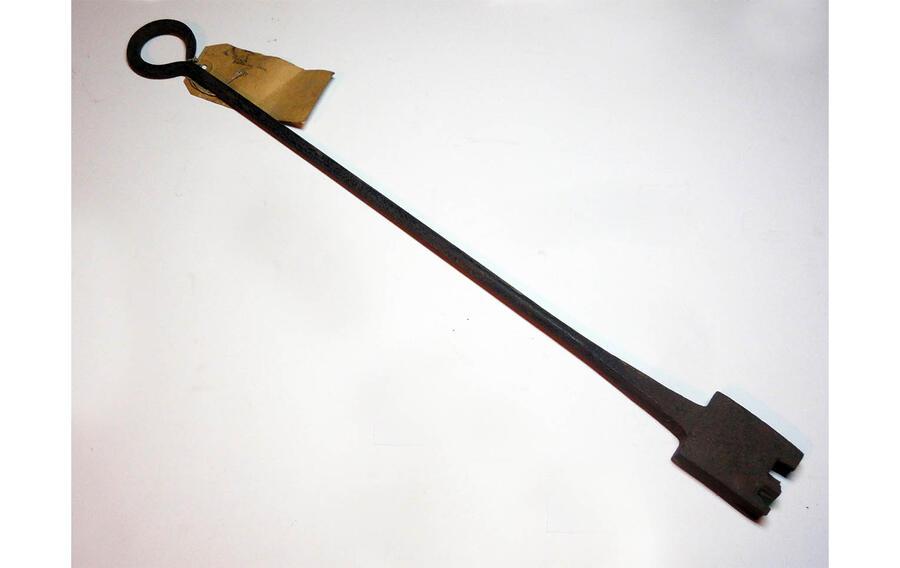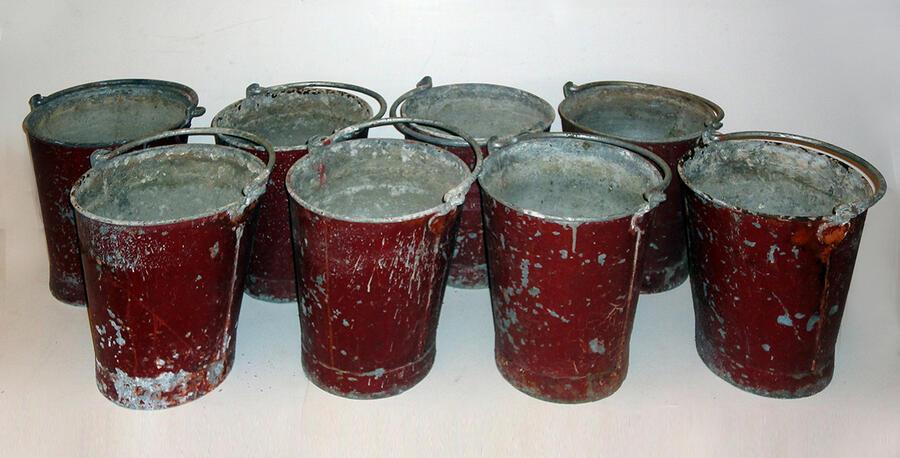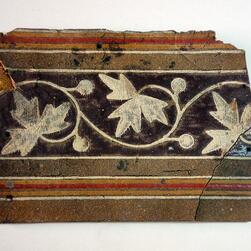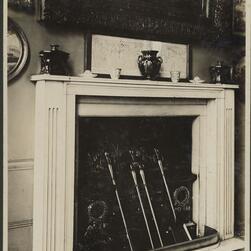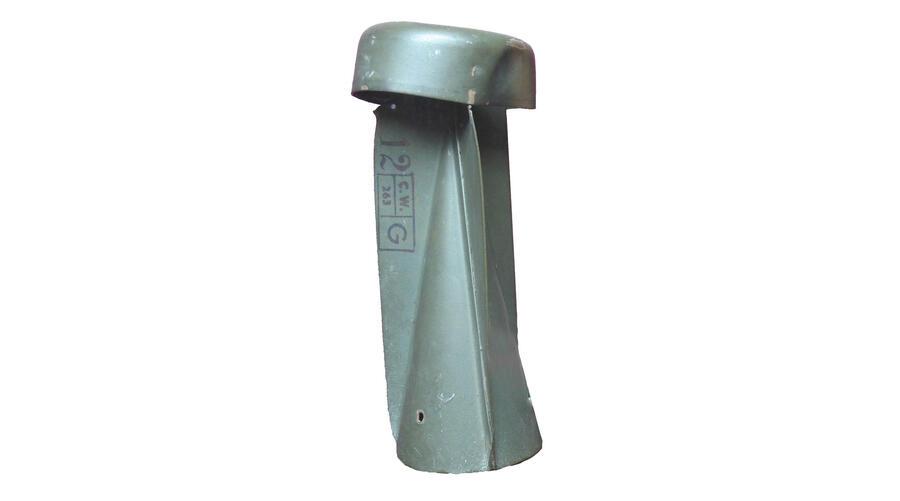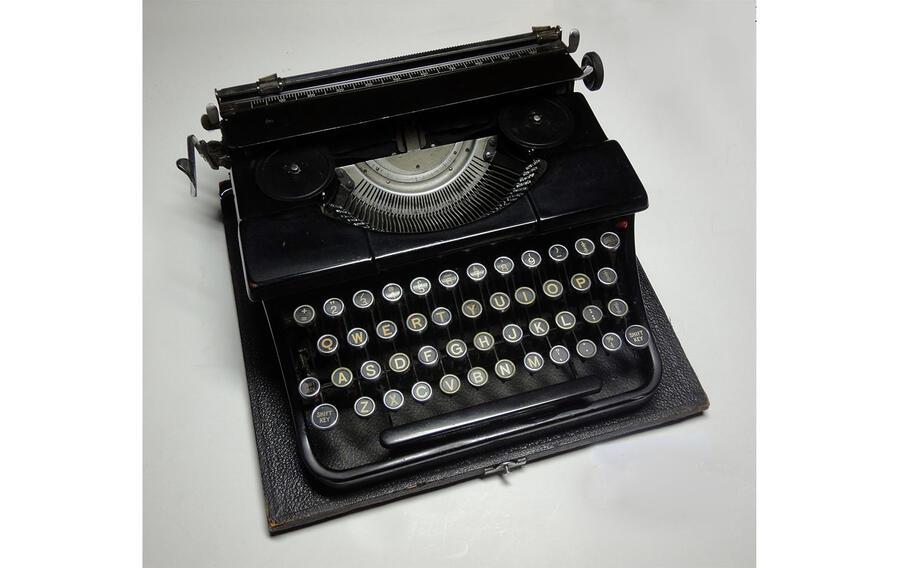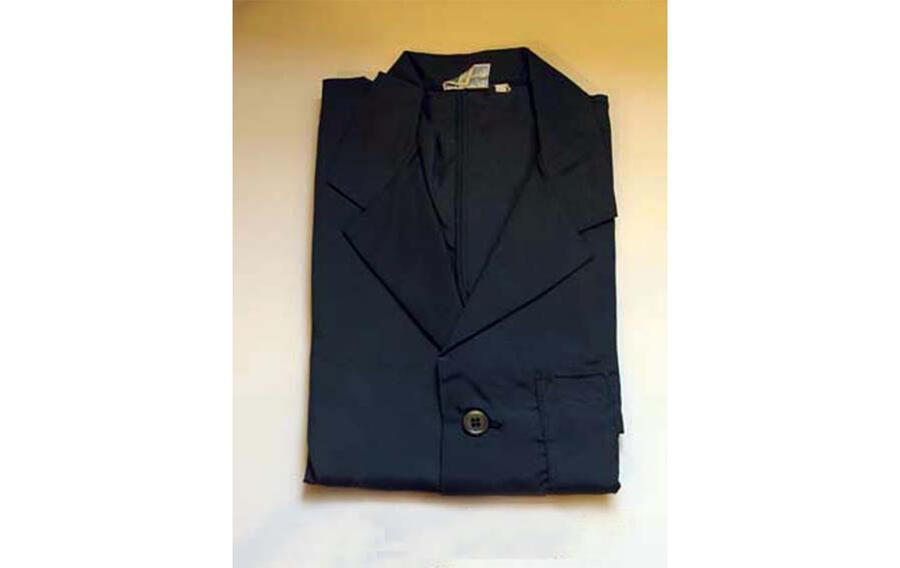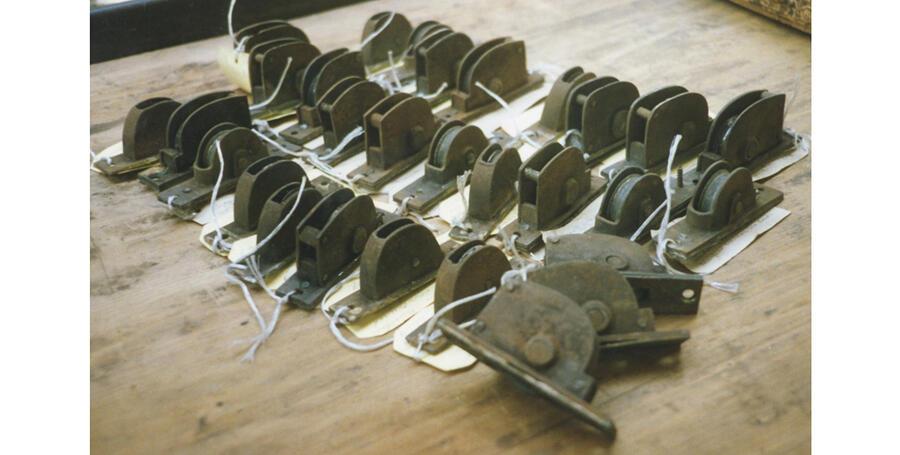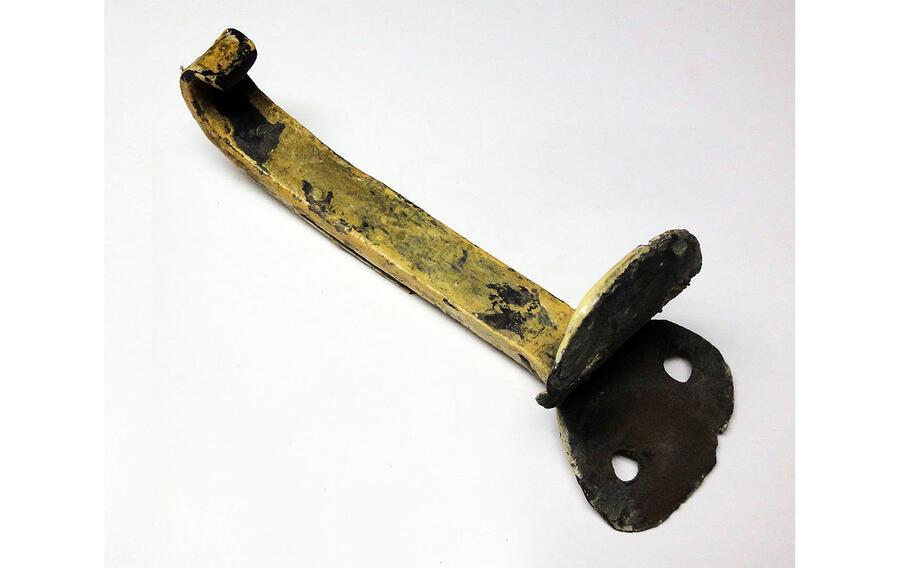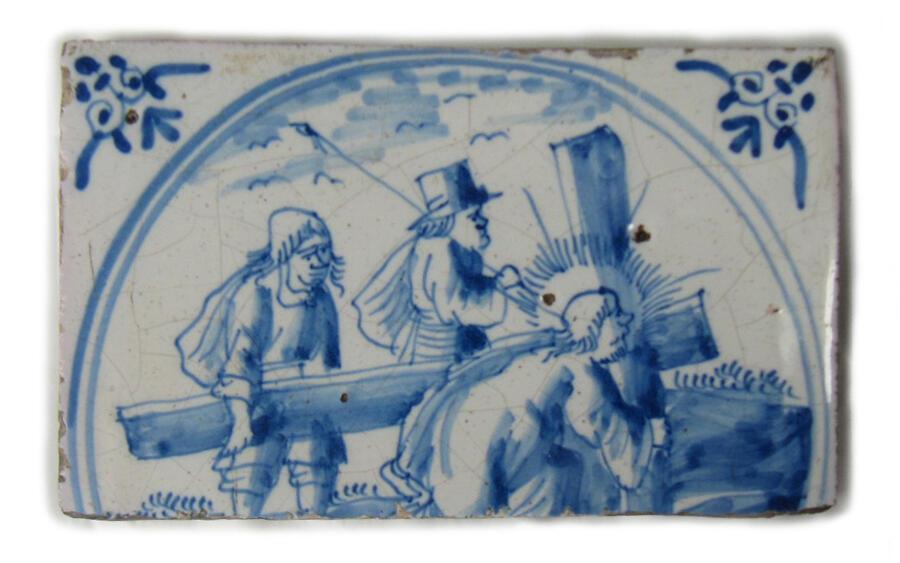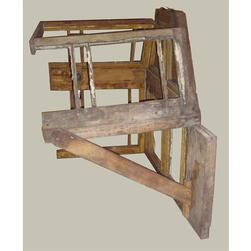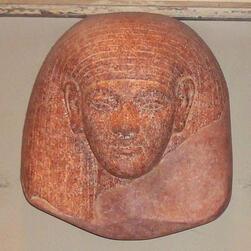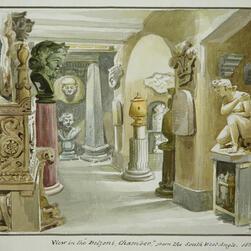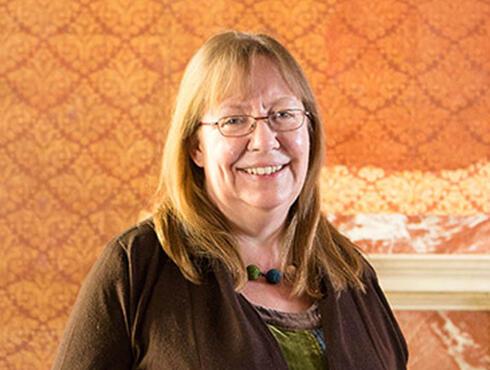Objects including a 19th century feather, a typewriter and a green uniform provide touching testaments to the efforts of the generations of staff who have cared for the Museum daily since 1837. The Building Archive also contains items such as a piece from a skylight guard and part of an incendiary bomb that convey a sense of the threats the Museum has faced, from stones thrown by Victorian loiterers in Whetstone Park to the London Blitz in 1940. Historic firefighting equipment and a fragment of floor cloth show how past protection has enabled the fragile fabric of the interiors of the Soane to survive into the 21st century.
